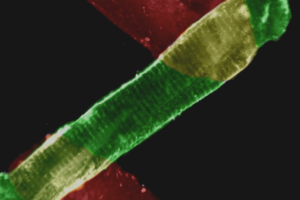LIVE WEBINAR: A Comprehensive How-To Demonstration of Higher Throughput Excitation-Contraction Coupling Investigations
During this live webinar, Michiel Helmes and Diederik Kuster will deliver a comprehensive how-to demonstration of higher throughput excitation-contraction coupling investigations with isolated cardiomyocytes.
Key learning objectives include:
- Get more from less: learn to maximize data from each animal
- Quality and quantity: best practices for data acquisition
- Knowledge is power: understand what your data means and how to interpret it
- Go beyond numbers: see how to get automated, same-day post-analysis data plotting and processing
About the speakers:

Michiel Helmes, PhD
Co-CEO
IonOptix/CytoCypher
Dr. Michiel Helmes has been able to successfully combine academia with an industrial career. After his PhD studying titin mechanics in cardiac muscle with Dr. Granzier, he has kept various academic appointments, at Boston University, the University of Oxford, and now the VU University Medical center in Amsterdam, The Netherlands. He is part owner and involved in system development at Ionoptix LLC. Being so fully immersed in working with isolated cardiac myocytes, he reached the conclusion that the field needed a more standardized instrument, and in 2015 he set up Cytocypher, that developed the high throughput system for calcium/contractility measurements that is the subject of this webinar.

Dr. Kuster’s research has focused on understanding molecular changes that underlie cardiac muscle function, hypertrophy and hypertrophic cardiomyopathy. As a PhD student, he studied changes in transcription factors that drive physiological and pathological hypertrophy in swine. Afterwards, he switched to the department of Physiology as a postdoc to focus on the function of cardiac myosin binding protein C (cMyBP-C). Combining biochemistry, mass-spectrometry and muscle mechanics, he identified a novel phosphorylation site on cMyBP-C, which was phosphorylated by GSK3β, and which increased the kinetics of contraction. His current research at the VUmc focuses on molecular changes in HCM mouse models and human patient samples. Combining biochemical and biophysical techniques with in vivo and in vitro measurements of cardiac/cardiomyocyte function, he aims to elucidate the still elusive HCM pathophysiology.







